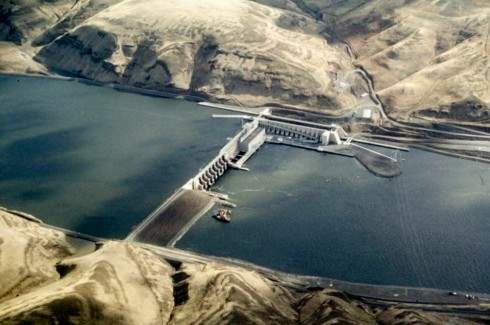forum
library
tutorial
contact

Our Decarbonization Efforts are Being
Compromised, But that Can Change
by Kurt Miller
Puget Sound Business Journal, November 19, 2021
|
the film forum library tutorial contact |

|
Our Decarbonization Efforts are Being
by Kurt Miller
|
 The 2006 documentary "Who Killed the Electric Car?" tells the story of what might have been, after General Motors launched the EV-1 battery-powered car in the 1990s. Despite being loved by their owners, these cars were unceremoniously recalled and destroyed by GM, leading to theories about a conspiracy between GM and the fossil fuel industry.
The 2006 documentary "Who Killed the Electric Car?" tells the story of what might have been, after General Motors launched the EV-1 battery-powered car in the 1990s. Despite being loved by their owners, these cars were unceremoniously recalled and destroyed by GM, leading to theories about a conspiracy between GM and the fossil fuel industry.
Conspiracy theories aside, 15 years later, the EV-1 example has particular relevance for a new wave of electrification. Given the growing severity of the climate threat, transportation electrification has made the mainstream. Many cities are also considering mandates that would require fully electrified heating and cooling systems in buildings and eliminating or reducing natural gas usage in an effort to meet decarbonization goals. These mandates would be game-changers in creating exponential demand for clean electricity on a national scale.
However, similar to EV-1, these new decarbonization efforts are on shaky ground, in this case because of three basic but hugely critical fallacies.
Too many energy policies ignore or fail to understand how the electric grid really works and the basic fact that it operates according to the physics of resistance. Grid operators must perfectly balance the supply and demand relationship between electrons every moment of the day. Left uncontrolled, cascading blackouts can occur which pose a genuine threat to life.
Tragically, we've seen evidence of the devastating effect of power outages from the Texas winter storms and the Gulf Coast following Hurricane Ida.
But aside from these tragic national disasters, our failure to adequately plan even for our day-to-day electricity needs can result in a major setback to decarbonization efforts. For example, to avoid a recurrence of last year's rolling blackouts, California officials are now waiving emission permits for fossil-fueled generators while residents, in desperation, buy gasoline-fueled generators to power their homes.
In essence, people are not going to care if their grid is decarbonized if we can't keep it safe and reliable.
Many environmental advocates (me included) call out the dire threat of climate change. However, some who claim to be environmentalists seem to ignore the climate crisis when it comes to embracing carbon-free hydropower and nuclear power.
Oregon's Gov. Kate Brown, for example, blames climate change for devastating wildfires and a deadly heatwave that killed hundreds of people. She wants to achieve a completely carbon-free grid by 2040. Despite this objective, she has ordered state officials to sue the federal government in hopes of removing the four lower Snake River dams in Eastern Washington state -- dams that produce enough carbon-free energy to power a city the size of Seattle.
Moreover, the city of Seattle doesn't want to buy electricity generated from the only nuclear generating plant in Washington state -- a plant that has operated safely for decades and continues to be modernized and maintained.
Our policymakers can't have it both ways, especially at a time when world leaders are running out of words to express our dire climate circumstances. We live in a time described as "a code red for humanity" and "the point of no return" -- shouldn't our actions match this urgency?
To achieve our decarbonization and electrification goals, we need to do what's within our reach: Keep the clean energy resources we have and add many others now.
Even though the costs of wind, solar and batteries have dropped dramatically over the last decade, building these resources from scratch is still largely much more expensive than maintaining existing hydropower and nuclear plants, which come with built-in energy storage.
Energy costs still matter to people, especially those in vulnerable communities. For this reason, the National Academies of Sciences, Engineering, and Medicine called on Congress to preserve existing hydro and nuclear facilities whenever possible. They believe the greatest threat to achieving decarbonization mandates is that traditionally underserved communities will be left behind.
There is no perfect form of energy. Each has its own environmental challenges. Yet, the current system of prioritizing higher cost renewables and eliminating lower cost, clean alternatives is akin to throwing out the baby with the bathwater.
I've often said the electric grid doesn't run on policy, it runs on physics. Similarly, climate change doesn't respond to words, it responds to actions. But our current actions need to be reexamined with a more strategic, rational and inclusive approach if we are going to achieve our decarbonization goals in the U.S., before it's too late.
learn more on topics covered in the film
see the video
read the script
learn the songs
discussion forum
